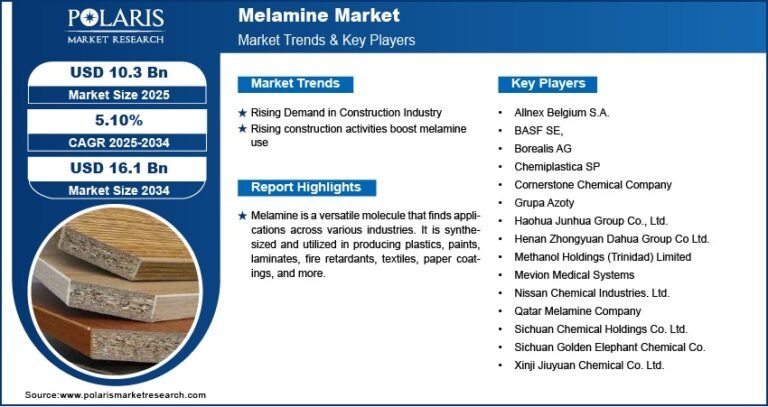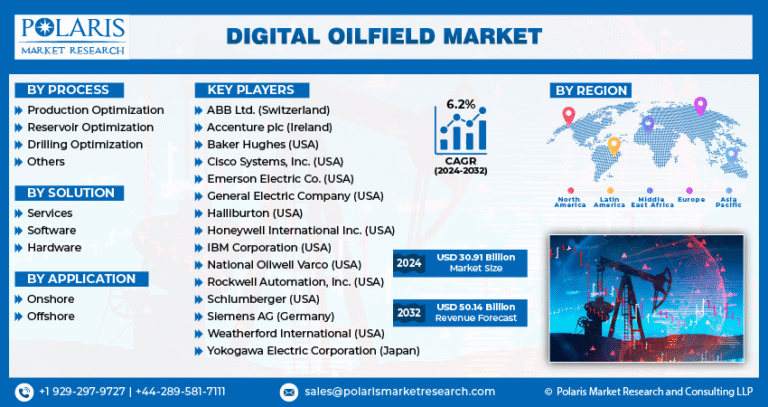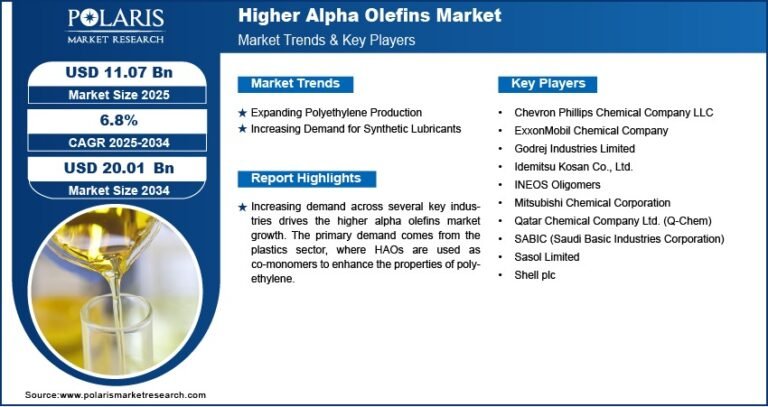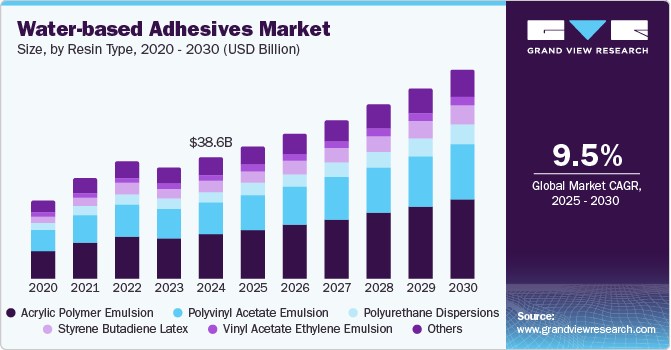Renewable Methanol Market on Track for USD 9,827.30 Million by 2034, Expanding at 25.20% CAGR
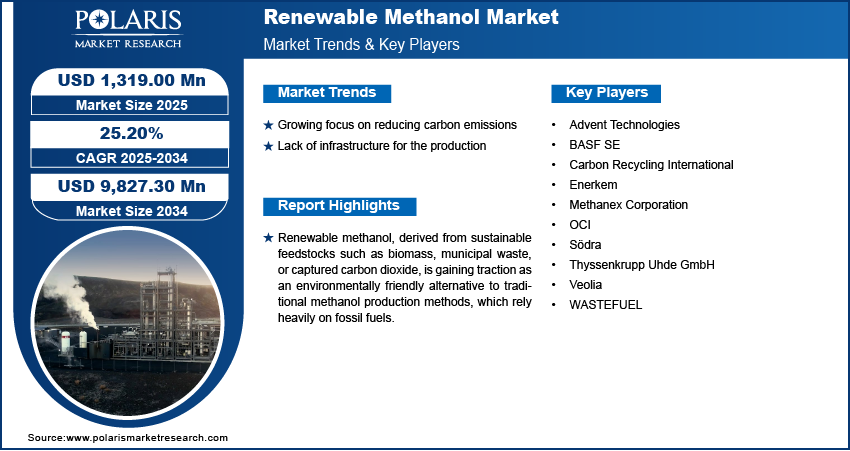
The global Renewable Methanol Market was valued at USD 1,622.8 million million in 2024 and is forecasted to grow at a CAGR of 25.20% from 2025 to 2034. Sustainable chemical feedstock and alternative fuel applications are driving market expansion.
Renewable Methanol Market – Trends & Insights
- Decarbonization of Maritime Shipping: Renewable methanol is emerging as a key marine fuel due to its low carbon footprint and compatibility with modified internal combustion engines, aligning with IMO regulations.
- Integration with Carbon Capture and Utilization (CCU): Methanol synthesized from captured CO₂ and green hydrogen is gaining traction as a scalable solution for carbon reuse and emissions reduction.
- Rise of Green Hydrogen Synergies: The expansion of green hydrogen production is enhancing renewable methanol viability, especially when combined with CO₂ captured from industrial processes or biogenic sources.
- Growing Demand for Sustainable Feedstocks: Renewable methanol is being adopted as a feedstock in producing low-carbon chemicals, polymers, and synthetic fuels in line with circular economy principles.
- Government Incentives and Regulations: Supportive policies, carbon pricing, and clean fuel standards in regions like Europe and North America are accelerating renewable methanol production and adoption.
Market Size & Forecast
Market size value in 2025 USD – 1,319.00 million
Revenue forecast in 2034 USD – 9,827.30 million
CAGR – 25.20% from 2025 – 2034
Request for Free Sample:
https://www.polarismarketresearch.com/industry-analysis/renewable-methanol-market/request-for-sample
Market Overview:
The Renewable Methanol Market is gaining momentum as global efforts to reduce carbon emissions and transition toward sustainable fuels intensify. Renewable methanol, produced from biomass, municipal solid waste, or captured carbon dioxide combined with green hydrogen, serves as a cleaner alternative to conventional methanol derived from fossil fuels. It is increasingly used in transportation, power generation, and chemical manufacturing. Its compatibility with existing infrastructure, coupled with its potential to decarbonize hard-to-abate sectors, positions renewable methanol as a critical component in the global energy transition.
Key Market Growth Drivers:
- Stringent Emission Regulations: International and regional emissions reduction targets, especially in the transport and industrial sectors, are boosting demand for carbon-neutral fuels like renewable methanol.
- Need for Drop-In Fuel Alternatives: Renewable methanol can often be used in existing engines and infrastructure with minimal modifications, making it a practical substitute for fossil-based fuels.
- Growth in Renewable Energy Projects: Increased investments in solar, wind, and green hydrogen projects provide critical inputs for producing renewable methanol at scale.
- Expanding End-Use Applications: From fuel blending and marine use to chemical synthesis, renewable methanol offers diverse applications across sectors, widening its market potential.
- R&D Advancements: Continued innovation in production technologies, such as plasma gasification and electrochemical synthesis, is improving efficiency and lowering production costs.
Market Challenges:
- High Production Costs: Compared to conventional methanol, renewable methanol is still costlier due to expensive feedstocks (like green hydrogen) and less mature production technology.
- Limited Infrastructure and Supply Chain: Existing methanol distribution systems are primarily designed for fossil-based supply chains, posing logistical and investment challenges for renewable alternatives.
- Technology Scalability Issues: Many renewable methanol technologies are still in pilot or demonstration phases, facing hurdles in scaling up to meet industrial demands.
- Feedstock Availability Constraints: Sourcing consistent and sustainable biomass or CO₂ inputs in large volumes can limit production capacity, especially in regions with underdeveloped waste management or carbon capture infrastructure.
- Market Competition from Other Green Fuels: Renewable methanol competes with other emerging low-carbon fuels such as green ammonia, SAF, and bio-LNG, which may delay or fragment adoption.

